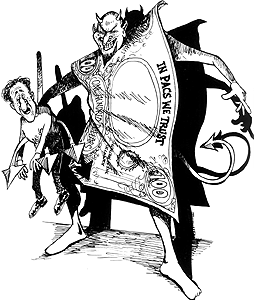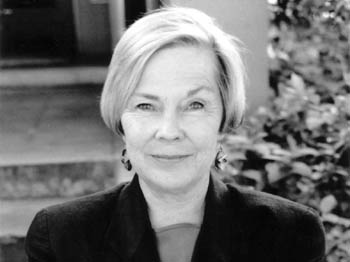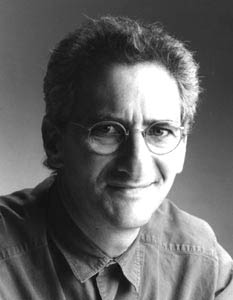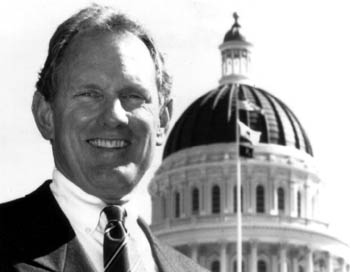![[Metroactive News&Issues]](/gifs/news468.gif)
[ Santa Cruz Week | SantaCruz Home | Archives ]
Where The Action Is
A political action committee sparked the biggest controversy in last month's election, but few people know the real story on PACs --and how much influence they have on local elections
By Sarah Phelan
Last month, the Federal Election Commission agreed to let candidates pay themselves salaries using campaign donations. Commissioner Michael Toner, who sponsored the proposal, said this decision could help balance "some of the advantages of incumbency" and "be an opportunity for middle America, people of modest means who are not independently wealthy, to run for public office."
Sounds a little bit like Santa Cruz. Because as the 2002 election showed, you don't have to be a millionaire to win an election in Santa Cruz County. In this year's big-money race, incumbent supe Mardi Wormhoudt spent $110,810 to her challenger Mark Primack's $86,950, and neither of them loaned themselves any money at all.
Indeed, in our humble little county, big money is generally met with distrust, and both candidates' campaigns in that particular race sought to garner financial and political support from local residents, organizations and political machines.
Yes, Primack's contributors did include contractors, architects and developers, whereas Wormhoudt's included unions and high profile politicians, but when it came to paying for services, Wormhoudt took heat for hiring San Francisco-based political consultants to produce harder-hitting fliers, whereas Primack hired from the local talent pool and mostly kept his messages positive.
But ultimately it was a political action committee that brought the most controversy to this last local election, when a Santa Cruz Sentinel headline clumsily claimed that "developers" had spent $25,000 on last-minute advertising for Primack. The story went on to say that the money had been funneled through the Committee for Better Local Government, claiming that "the large cash infusion is rare for a local election" and insinuating it might be illegal.
In fact, a review of election rules and records shows that for a local committee to raise that amount of money--or considerably more--is neither illegal nor unheard of. In 2002, the Save Our City committee raised $60,000 to fight the utility tax repeal, while the Hospitality Alliance raised $41,110 while promising to "promote tourism and hospitality alliance in Santa Cruz County through political action resulting in better government."
And while most of the fallout after the election focused on a back-and-forth between those who felt the Sentinel story was biased and inaccurate and those who felt that its insinuations of developer influence and underhanded campaigning were essentially fair, what the whole mess really underscored is how poorly people understand how PACs work and influence elections. And with their ever-growing importance even at the local level, that's something voters simply can't afford to do.
Looking Back at PACs
With the campaign-reform battle having raged on and off for years now, it's no surprise to anyone that money plays a critical role in determining who get to rule the American roost.
What is less often discussed is why the American electoral system seems to be increasingly pay-to-play. When we're handing out blame in this department, let us not forget to double-dip for the U.S. Supreme Court, which, back in 1976 in the case of Buckley v. Valeo, handed down two key exemptions to campaign finance controls. The first allows individuals to give themselves unlimited amounts of money if running for office, which helps explains the predominance of the filthy rich in the corridors of power. The second allowed that shadowy figure of special-interest politics, the independent political action committee, to raise unlimited amounts of money, provided it has neither contact with nor input from the candidate whose race it seeks to influence.
Both exemptions were won using a freedom of speech argument, namely that it's unconstitutional to limit someone's freedom to influence the outcome of a political race.
The end result is that at this point, as Crystal Bertheau of the Santa Cruz County elections office explains, a PAC can raise and spend as much money as it wants.
"If you are running for supe, you are only allowed to accept a certain amount of money, but there is no control on independent expenditure committees," says Bertheau. "No one has any control of them. The candidate has no control over what someone independent of them is doing. And by law, that candidate cannot know."
So why, then, the big stink over what the Committee for Better Local Government did?
As with so many things in American politics, much of the answer is tied up in image.
Take again the case of the Save Our City committee. The group raised $60,000 to fight the repeal of the city utility tax, and two contributors, Gary Filizetti and William Brooks, who gave $500 and $1,000 a piece, even listed themselves as "developers."
This time, though, there was no one screaming blue murder over the D-word; in fact, nothing about the group stirred controversy.
Contributors to Save Our City, of which there were many, were almost all local residents, with most of them giving in the $100-$500 range, with a few notable exceptions. Assembly Member Fred Keeley gave $4,000; SEIU Local 415 gave $4,000; the Committee to Save Community Services (formed to fight the repeal of the utility tax at the county level) gave $7,500; and the Klein Financial Corporation (whoever they are) gave $3,000.
The Same, But Different
Ironically, the embattled Committee for Better Local Government also gave almost $7,000 worth of in-kind contributions to fight the utility tax repeal. But if everything it was doing seemed to be within the rules and regs, why did it catch so much heat?
First, the CFBLG filed its expenditure reports at the last minute, thereby arousing suspicions of wrongdoing. These suspicions blossomed into a conspiracy theory involving "developers" and "outsider influence" when it was discovered that of the five donors, all of which gave a hefty $5,000 a piece, two had out-of-state addresses, and one gave a San Jose address. And so began the negative spin.
Then there was the oft-raised question of whether the committee's actions really were legal under local election law. The answer to that question can be found in a letter that Assistant District Attorney Don Gartner sent Paul Sanford four weeks before the Nov. 5 election.
Gartner wrote that since county election law focuses on limiting contributions to candidates or to committees controlled by candidates, "it would seem" that a general purpose committee "is not subject to the local ordinance and can receive contributions in excess of $250 from individuals, as well as business contributions."
In other words, PACs are exempt from those limits as set by county law.
Gartner also wrote that as to "whether a general purpose county committee can make a contribution to a county candidate, I would say the answer is 'no' if the committee has accepted contributions in excess of the $250 limit." However, he wrote, "receipt of larger individual contributions or business contributions would still leave a general purpose county committee free to influence a local election via independent expenditures."
Asked by Metro Santa Cruz if he thought this added up to a loophole, Gartner replied, "Only if you call a loophole something created by the Supreme Court."
"Before you can impinge upon free speech, you must have compelling evidence that to do so would prevent corruption," said Gartner, explaining that the Supreme Court's thinking was (a) that you can spend as much as you want on yourself, because you can't corrupt yourself, and (b) that you can spend on an independent committee that is not connected to a candidate.
The issue then, says Gartner, becomes whether the expenditures are really independent.
"In the past couple of cases that we've looked at closely, we've found it's very difficult to show that a committee claiming to spend independently does in fact have a connection with the candidate, unless there is obvious evidence of collusion or common associations between the two. For us to proceed, we have to have confidence that there is probable cause," says Gartner, adding that the DA's office has not filed a single such case in Santa Cruz.
All of which seems to suggest that people with money have plenty of legal ways to influence the outcome of even a local election. But as this recent election proves, you sometimes have to be a master of spin to avoid seeing your efforts backfire.
PAC To The Future
So will this past election serve as the case book example of how not to run a PAC? Not in the case of one local activist who seems to have had some success.
Gordon Pusser was treasurer of the Committee Opposed to Measure Q, which he set up to battle the city's unsuccessful measure to raise the hotel tax 1 percent. His committee was up against a well-funded pro-Q campaign that included a much better-funded PAC, the Hospitality Alliance; it spent $5,200 total, most of it on fliers and paid newspaper advertisements.
"The tradition of one person giving large sums of money is generally seen as wrong or suspect. Consequently, if that gets disclosed, it's going to be harmful," says Pusser of the PAC image problem. "And any time you're seen as taking money from a business of fiduciary interest outside this area, that's very counter productive."
But Pusser argues that PACs have their place. If they weren't legal, 20 people would have to give $250 to raise $25K, all of which makes it that much harder for anyone wanting to challenge an incumbent.
"The power of the incumbent to raise big bucks is well known, whereas it's the newcomer who needs to get larger chunks of money to fight the incumbent's fame from stories and photos in the press," says Pusser. "Any individual who is very wealthy can spend all the money they want to support someone--or themselves--as long as it doesn't go through the campaign."
Given, then, the potential of PACs, how best to use them?
"If you don't have a plan, you are shooting yourself in the foot, and if you get all this money to spend at the last minute, you end up doing redundant stuff--like buying ads when the candidate's campaign has already done that," says Pusser.
And Ryan Coonerty, who worked on Wormhoudt's SF-based mail campaign, warns against outsider interference, recalling how when Gary Patton ran against Bruce McPherson for state Assembly in 1993, the California Democrats were going to send money for pot holders saying "Vote for Gary" to be sent to all registered Democratic women in the county.
"Luckily somebody nixed that plan, sensing that a statement that might sit well in Sac might backfire here where the women are more famous for running with wolves than pulling batches of hot apple pies out of ovens," says Coonerty.
Coonerty also believes a good volunteer base with phone banks and a targeted mail campaign works best for local races.
"Mike Rotkin's ground operation was better organized than that of Al Gore," says Coonerty, who worked for Gore's campaign in the New Hampshire primary.
As for legality issues, Coonerty notes that the California Fair Political Practices Commission (FPPC) is a relatively small government agency with relatively minimal fines, but that the district attorney's office has prosecutorial discretion on local cases.
Meanwhile, across the San Lorenzo River in that gray box known as the county building, records of independent expenditure committees sit gathering dust, a veritable gold mine for journalists on the snoop. Who knew that Sen. Bruce McPherson accepted $3,000 from PG&E in his unsuccessful bid to become Lt. Governor? Or that Harmony Food Corp, a.k.a. Safeway, gave $5,000 to Bill Simon's failed campaign? Or that Pavex Construction in Watsonville gave $12,000 to support a transportation funding initiative (Proposition 42) that steamrolled its way to success last March?
And who cares? Well, probably no one. At least, not until the next election, when politicos will start digging deeper than archaeologists and we'll all end up feeling like we we're watching a goddamn David Lynch movie.
Copyright © Metro Publishing Inc. Maintained by Boulevards New Media.
![]()

Illustration By DeCinzo

Mardi Wormhount Took heat for fliers.

Mark Primack: Supe bid may have been hurt by PAC controversy.

Fred Keeley One of the biggest contributors to save our city

Bruce McPherson: What was inside his envolope from PG&E?
The secretary of state, which processes all campaign committee info, has a website: www.cal-access.ss.ca.gov/. The FPPC regulates any possible violations of campaign finance rules. The free hotline number is 866.ASK.FPPC (866.275.3772).
From the December 4-11, 2002 issue of Metro Santa Cruz.